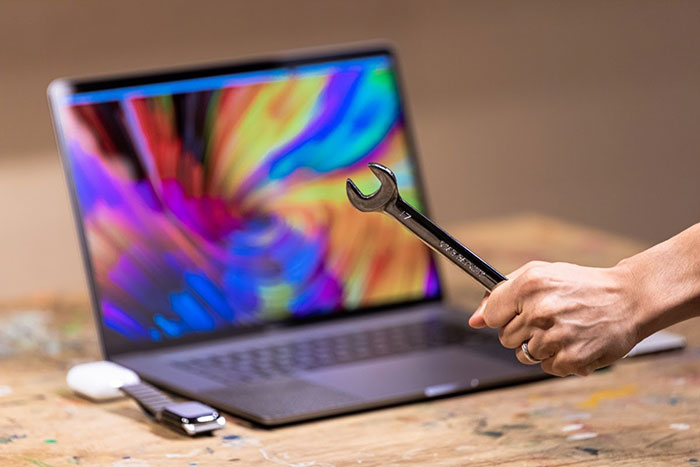Ingress Protection Rating Meaning
30th Sep 2020

When it comes to technology, IP is short for Ingress Protection. It refers to international standards created by the IEC (International Electrotechnical Commission). What IP standards are meant to do is clarify the capabilities of technology like phones, laptops, and tablets in a regulated way to ensure more accurate product descriptions and fairer marketing practices. Instead of different brands claiming their products are resistant or immune to the elements without any backup, they have to have clear definitions with Ingress Protection Ratings.
So what is the meaning of the IP ratings you see on the back of your computer or the spec sheet of your phone? Read on here to learn more today.
The Ingress Protection Rating Scale
Each IP rating consists of two numbers: the first refers to a product’s protection level against solids and the second against liquids. The ratings go from zero through six for solids and zero through eight for liquids. Very rarely you may see a third number that refers to the product’s impact resistance.
Whatever the rating is for your piece of technology, international standards prefer to refer to everything as resistant to a particular element because they don’t believe anything is dust-proof or water-proof forever.
Ingress Protection Rating Breakdown
Here are the two charts that define each number’s meaning in the IP rating:
Solids (Dust/Dirt)
| Rating Level | Object Size Resistance | Testing Method |
|---|---|---|
| 0 | Nothing | |
| 1 | Greater than 50 mm | |
| 2 | Greater than 12.5 mm | |
| 3 | Greater than 2.5 mm | |
| 4 | Greater than 1 mm | |
| 5 | Dust & Sand | Dust Circulation |
| 6 | Dust | Vacuum Forced Dust |
Water
| Rating Level | Resistance Against | Example | Testing Method |
|---|---|---|---|
| 0 | Nothing | ||
| 1 | Drips | Vertical Falling Drops | Replicated Rainfall of 1 mm/Min |
| 2 | Drips While Tilted | Falling Drops | Replicated Rainfall of 3 mm/Min on the Device for 2.5 Minutes in Four Positions |
| 3 | Spraying Water | Angled Spray Up to 60 | Blasted with 10 L/Min of Water at up to 21 PSI for 5 Minutes |
| 4 | Splashing Water | Splashes From Any Direction | 10 Minutes Under a Spray Nozzle up to 21 PSI |
| 5 | Jets of Water | Up to 6.3 mm Nozzle | 15 Minutes and up to 12.5 L/Min at a Pressure of 4.3 PSI From 3 Meters Away |
| 6 | Powerful Jets | Up to 12.6 mm Nozzle | 3 Minutes and up to 100 L/Min at a Pressure of 14.5 PSI From 3 Meters Away |
| 7 | Immersion | Less Than 1 Meter | 30 Minutes in Water up to 1 Meter Deep |
| 8 | Immersion | More Than 1 Meter | Submerged in up to 3 Meters |
If any of the numerals is marked with an X in one of the spots, this also stands as a zero for resistance to that material.
While all of these tests are conducted in laboratory conditions, they can pretty accurately predict a device’s performance in the real world. Just keep in mind that factors like the presence of saltwater or chlorine can change the resistance of a product. Always stay on the safe side when using your devices, regardless of their Ingress Protection Rating.
What About Drop Protection?
No manufacturer in the United States uses Ingress Protection Ratings that cover drop protection. Instead, they choose to use the Military Standard, also known as MIL-SPEC. There are MIL-SPEC certifications that deal with everything from extreme temperatures and fungus to acid and vibration.
Ruggedized Devices

There are a number of industries that require extremely rugged equipment to ensure they remain fully operational at all times. Police, utilities, aviation, military, and more all need devices with very high Ingress Protection Ratings. Discover durable, international rating and certified computers and accessories at OC Rugged today.

